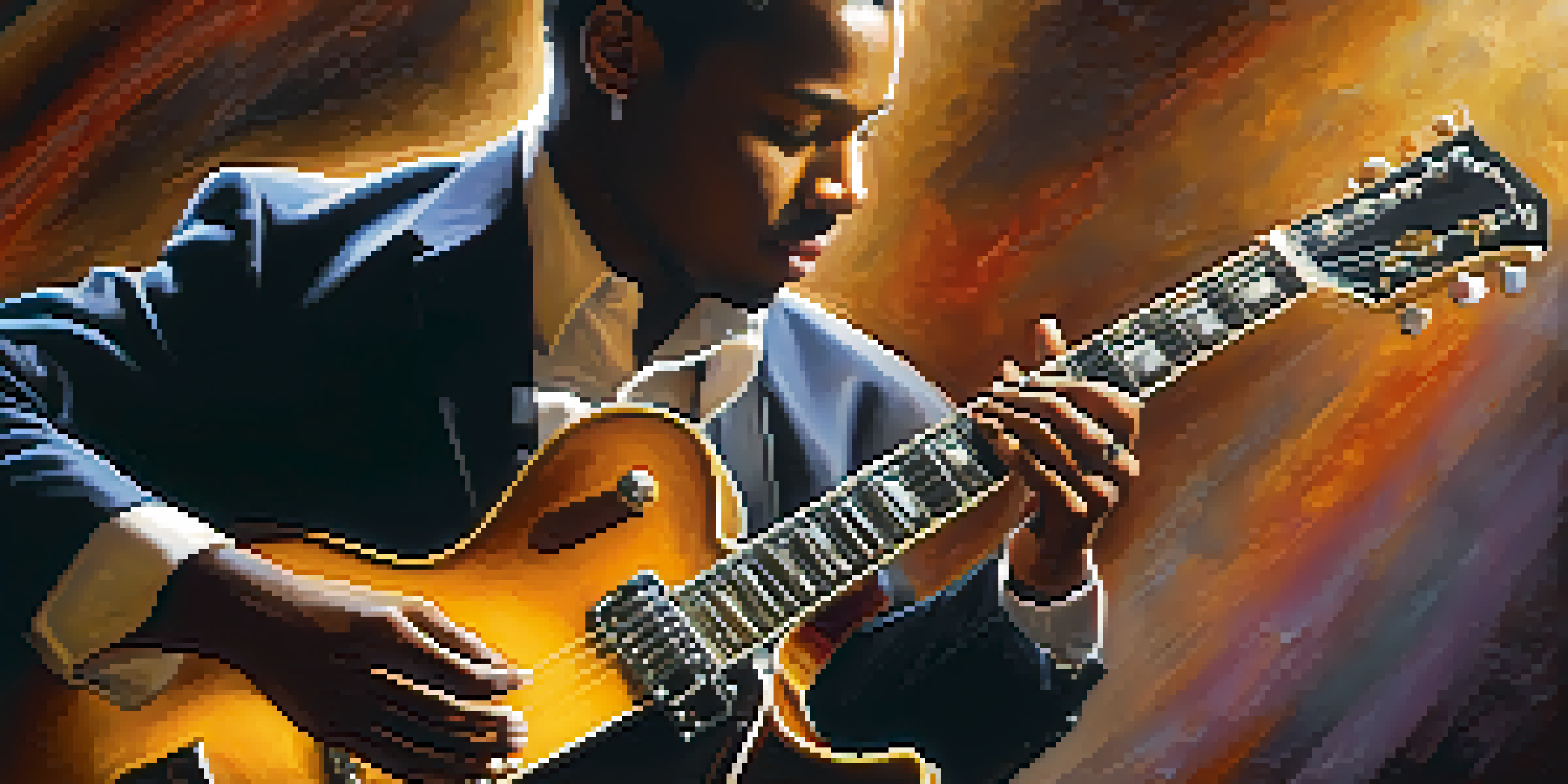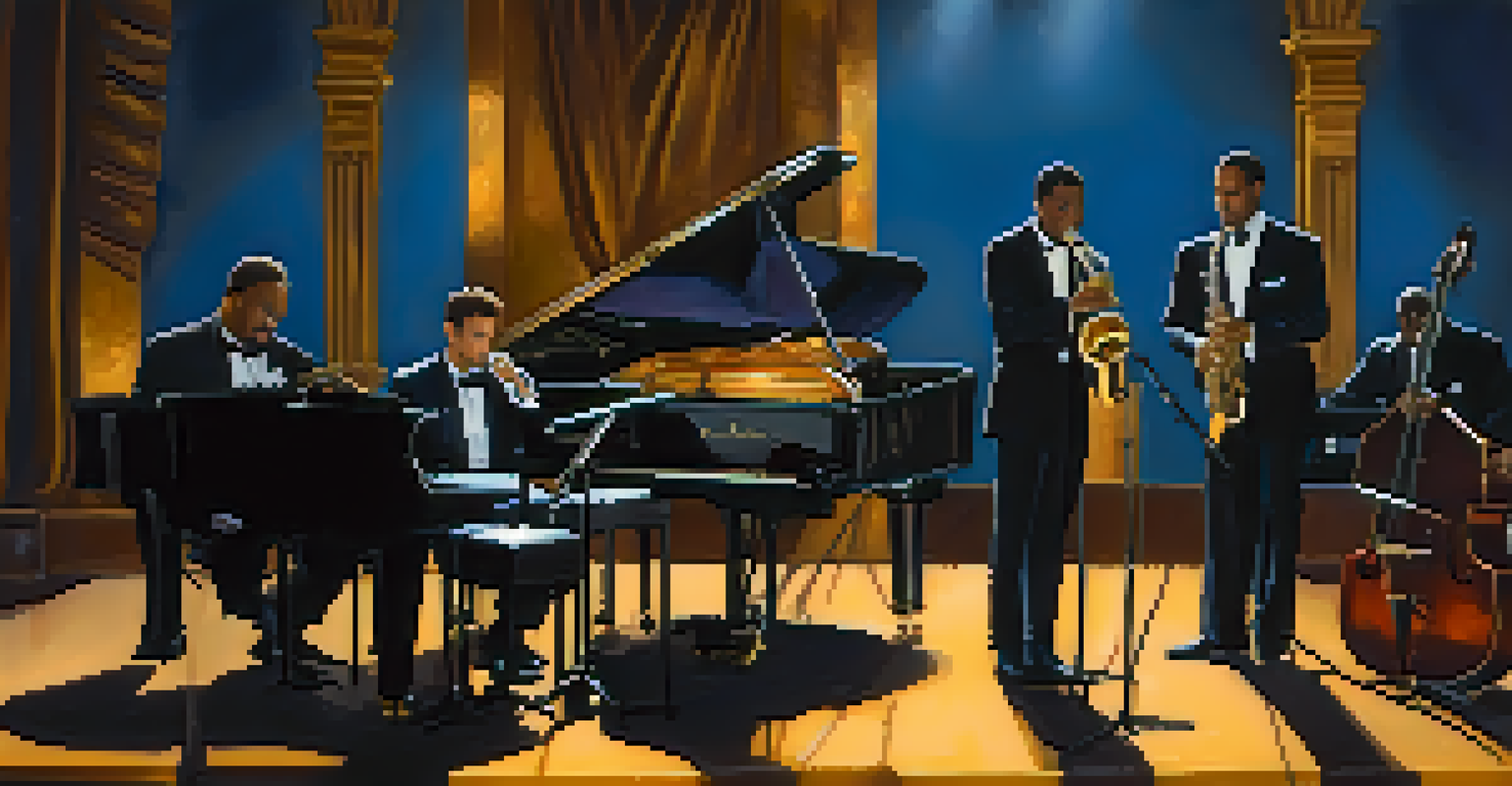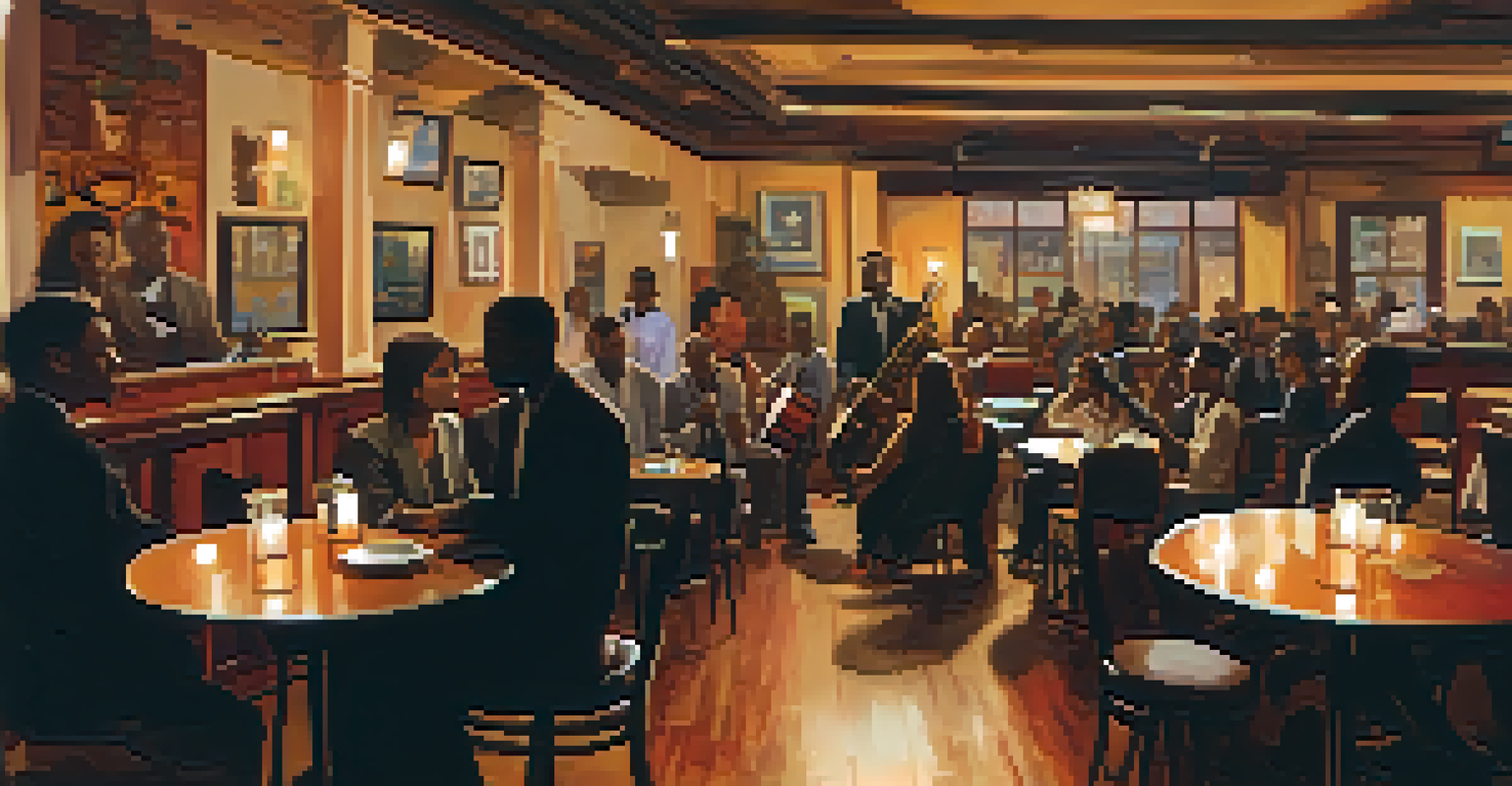Techniques for Guitarists in Jazz Improvisation

Understanding the Jazz Chord Progressions
Jazz music often relies on complex chord progressions that can seem daunting. However, getting comfortable with these structures is crucial for improvisation. Familiarizing yourself with common progressions like ii-V-I can provide a solid foundation for your playing.
Jazz is not just a form of music, but a way of life, a way of thinking, and a way of being.
By understanding how chords function within a key, you can begin to anticipate changes and create melodies that complement the harmony. For example, if you're playing in the key of C, knowing that the ii chord is Dm and the V is G can help you navigate smoothly through the changes.
Practicing these progressions in different keys will also build your confidence and fluency on the guitar. As you become more familiar with these patterns, improvisation will feel less like guesswork and more like a conversation with the music.
Exploring Scales for Jazz Improvisation
Scales serve as the building blocks for improvisation. While major and minor scales are foundational, jazz often incorporates modes and altered scales that add depth and color to your playing. The Mixolydian and Dorian modes, for instance, are frequently used in jazz contexts.

Experimenting with different scales can help you discover unique sounds and phrases. For example, if you’re soloing over a dominant chord, using the Mixolydian scale can yield some exciting, bluesy tones that jazz audiences love.
Master Chord Progressions for Jazz
Familiarizing yourself with common chord progressions like ii-V-I builds a solid foundation for improvisation.
Incorporating these scales into your practice can enhance your improvisational vocabulary. Start slow, and as you grow more comfortable, challenge yourself to incorporate these scales into real-time jam sessions.
Utilizing Arpeggios in Your Solos
Arpeggios are simply the notes of a chord played in sequence, and they can add a melodic touch to your improvisation. By mastering arpeggio patterns, you can create solos that sound more structured and sophisticated. For instance, playing the arpeggio of a Cmaj7 chord can help outline the harmony effectively.
The beautiful thing about learning is that no one can take it away from you.
In jazz, it’s common to superimpose arpeggios over various chord changes. This technique not only highlights the harmony but also adds a layer of complexity to your lines. Try linking arpeggios of different chords in a progression to see how they interact.
Regular arpeggio practice can deepen your understanding of chord tones and their relationship to the underlying harmony. Incorporate them into your improvisation routine, and you'll notice a significant enhancement in your solos.
Implementing Rhythmic Variation Techniques
Rhythm is just as important as melody in jazz improvisation. By varying your rhythmic patterns, you can keep your solos fresh and engaging. For example, instead of playing all quarter notes, try incorporating eighth notes, triplets, or even syncopated rhythms.
Experimenting with different rhythmic feels can transform a simple phrase into something exciting. For instance, playing a familiar lick with a swing feel can give it a completely new vibe. This rhythmic creativity can also help you connect more with your audience.
Enhance Solos with Rhythmic Variation
Incorporating diverse rhythmic patterns into your improvisation keeps your solos engaging and dynamic.
Additionally, practicing with a metronome or backing tracks can help you explore various rhythms in your improvisation. This will not only improve your timing but also encourage you to think outside the box when crafting your solos.
Developing a Personal Style Through Listening
One of the best ways to develop your improvisational style is through active listening. By immersing yourself in jazz recordings, you can absorb the nuances and phrasing of great guitarists. Pay attention to how they construct their solos and interact with their bandmates.
Transcribing solos from your favorite jazz guitarists can also be incredibly beneficial. Not only does this exercise teach you new licks, but it also exposes you to different approaches and techniques, helping you to shape your own unique style over time.
As you cultivate your ear through listening and transcribing, start to incorporate elements you admire into your playing. This process of assimilation and innovation will lead to a more authentic expression of yourself in your improvisation.
Practicing Call and Response Techniques
Call and response is a powerful improvisational technique used in jazz that mimics a conversation. By playing a musical 'call' followed by a 'response,' you can create a dynamic, engaging solo. This approach encourages interaction with the music and your fellow musicians, fostering a sense of dialogue.
To practice this technique, start by playing a short phrase (the call) and then responding with a contrasting phrase. This might involve changing the rhythm, pitch, or even the emotional tone of your response. The goal is to create a musical exchange that feels alive and spontaneous.
Develop Style Through Active Listening
Listening to and transcribing jazz recordings helps shape your unique improvisational voice over time.
Engaging in call and response with other musicians can also enhance your improvisational skills. It encourages listening, quick thinking, and adaptability, all essential components of effective jazz performance.
Emphasizing Emotional Expression in Your Solos
Jazz is deeply rooted in emotional expression, and improvisation is an opportunity to convey your feelings through music. When you play, think about the story you want to tell or the emotions you wish to convey. This mindset can make your solos more compelling and relatable.
Techniques like dynamics, phrasing, and articulation can significantly enhance the emotional impact of your playing. For example, playing softly can create a sense of intimacy, while a powerful, loud passage can evoke excitement or intensity.

As you develop your ability to express emotions through your instrument, your audience will connect with your music on a deeper level. Remember, the essence of jazz lies in its spontaneity and personal storytelling.